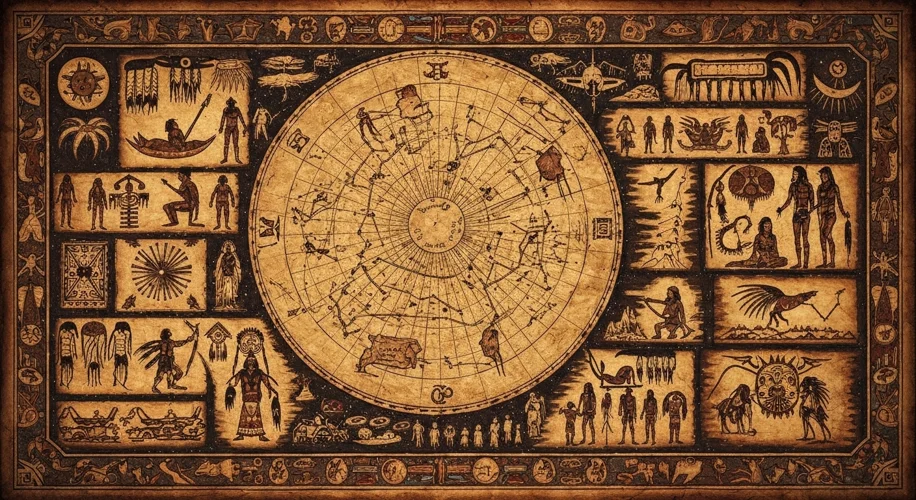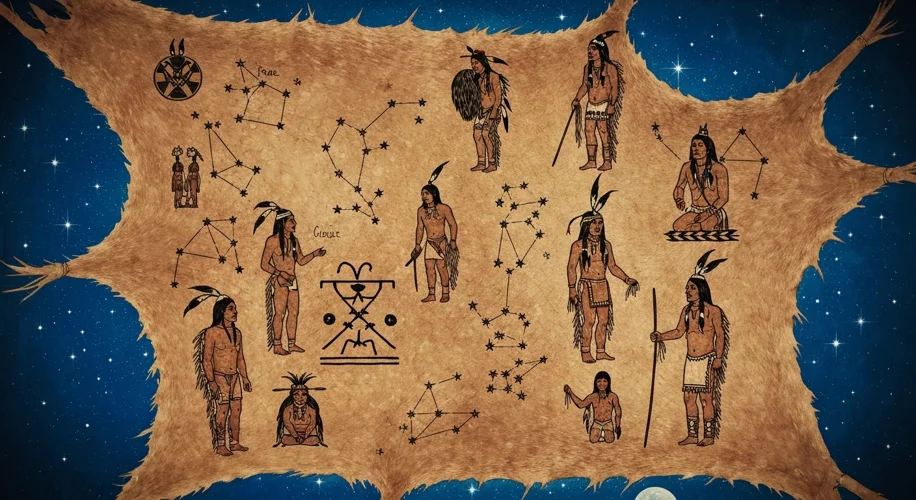Imagine a world where the night sky wasn’t just a collection of twinkling lights, but a sacred map, a storybook, and a guide to the very origins of existence. For the Pawnee people, this was not imagination; it was their reality, embodied in a remarkable artifact known as the Pawnee Star Chart.
Long before Europeans set foot on North American soil, the Pawnee, a confederation of Native American tribes historically inhabiting present-day Nebraska and Kansas, possessed a profound understanding of the cosmos. This knowledge was not confined to academic observation; it was interwoven with their spiritual beliefs, their origin stories, and their very way of life. At the heart of this cosmic worldview lay the Pawnee Star Chart, a sacred object that acted as a celestial atlas and a visual testament to their place in the universe.

The original Pawnee Star Chart, believed to have been created in the late 18th or early 19th century, is a testament to their sophisticated astronomical knowledge. Rendered on a tanned buffalo hide, it depicts a circular representation of the night sky as seen from Earth. However, it is far more than a simple astronomical diagram. The chart is imbued with deep symbolic meaning, illustrating the Pawnee creation myth and their understanding of the spiritual forces that govern the universe.
Central to the chart is a representation of the sky, with various stars and constellations marked. But what truly sets it apart are the figures and symbols that populate it, each telling a part of the Pawnee origin story. The Pawnee believed that their creation began with a Sky Chief and that the stars themselves were descended from divine beings. The chart meticulously maps these celestial origins, linking the movements of the stars to the cycles of life, death, and rebirth. Key figures, such as the warrior constellation known as “The Man” (likely Orion), and other groupings, were not merely navigational tools but embodiments of ancestral spirits and heroes.
The Pawnee understood the cyclical nature of time, marked by the celestial bodies. They observed the solstices and equinoxes, and their rituals and ceremonies were often timed to coincide with specific astronomical events. The Star Chart served as a visual reminder of these connections, reinforcing the belief that the earthly realm and the celestial realm were inextricably linked.
The creation of the Star Chart was likely a sacred act, performed by individuals who held deep spiritual authority within the Pawnee community. Its possession and interpretation would have been a closely guarded tradition, passed down through generations. The Pawnee didn’t just look at the stars; they read them, understanding the intricate narrative woven into the fabric of the night sky. This made the chart an invaluable tool for religious leaders, storytellers, and elders, ensuring the continuity of their cultural heritage.
The Pawnee Star Chart is more than just an artifact; it is a window into an indigenous worldview that possessed a profound connection to the cosmos. It challenges the often-held notion that advanced astronomical understanding was solely the domain of European cultures. Instead, it reveals the sophisticated intellectual and spiritual traditions of Native American peoples, who saw the universe not as a void, but as a vibrant, living entity filled with meaning and guided by ancient, sacred laws.
Today, the Pawnee Star Chart resides at the American Museum of Natural History in New York City, a silent yet powerful witness to a rich cultural heritage. It serves as a potent reminder that history is not a monolithic narrative, but a complex tapestry woven from diverse voices and perspectives, each with its own unique way of understanding our place among the stars.

